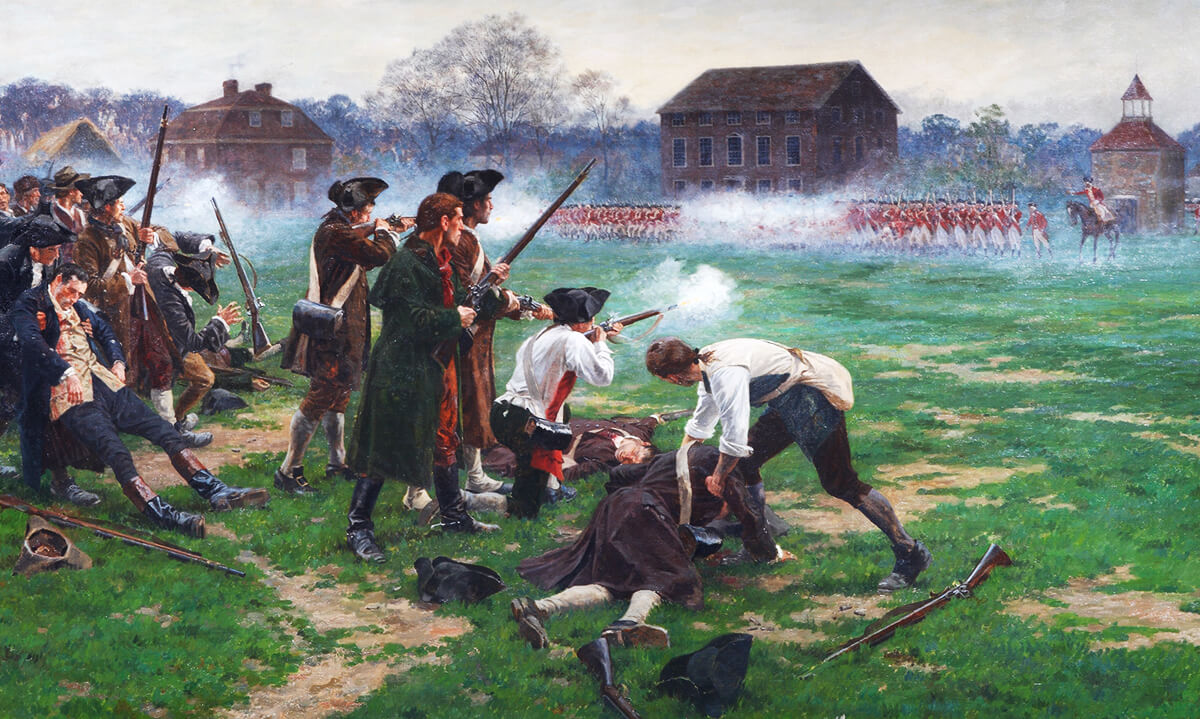
When looking back upon his service in the Civil War, John Clem remarked, “Almost literally it might be said that I went from the nursery to the battlefield.”1 Such an observation was not an overstatement. Widely held to be the youngest soldier in the Union army,2 John Clem first attempted to join the Third Ohio Regiment of Volunteers when he was nine years old only to be laughed off.3 This did not deter him though, and when the Third Ohio boarded their train to the mobilization camp in Covington, Kentucky, Clem climbed aboard as well.4 He explained:
My father had no notion of allowing me to go to the war. Accordingly, I decided to run away. The spirit of adventure had gripped me. It was necessary that the Union should be preserved, and my help was obviously needed.5
Once in Covington, John Clem again attempted to enlist but this time with the Twenty-Second Michigan. Although he was officially rejected Clem continued with the regiment serving as a drummer boy and drawing the standard soldier’s pay.16 The Twenty-Second were quick to accept the young boy, and equipped him with a uniform and a rifle altered to a manageable size.7 In his own words:
From the view-point of the Twenty-Second Michigan, I was a member in full standing of that military family—the baby of the regiment. … In all the hardships of war I endured my share—such as marching in rain or snow, sleeping without protection against the elements, and on occasions going hungry.8
Throughout the war he fought at the battles of Shiloh, Chickamauga, Stone River, Resaca, Kenesaw, Peach Tree Creek, Atlanta, and Nashville.9 During these battles Clem was wounded twice10—one time receiving shrapnel from a shell in the hip (either at Atlanta11 or Chickamauga12), and the other time having his ear “nipped” by a bullet in Atlanta.13
During the war, due to his bravery at the battle of Chickamauga, he became the youngest non-commissioned officer in the history of the American armed forces due. Clem recalled that battle:
At the close of the day the Union forces were retiring toward Chattanooga, and my brigade was sore beset by the enemy. In fact, we were in a tight place. A Confederate colonel rode up and yelled at me, “Surrender, you damned little Yankee!”
Raising my musket without aiming, I pulled the trigger, and he fell off his horse, badly wounded. …
As I have said, however, it was a tight place. Three musket balls (as I subsequently ascertained) went through my cap. I decided that the best policy was to fall dead for the moment, and so I did. I lay dead until after dark, when I “came alive” again and managed to find my way to Chattanooga.14

As a result, he was praised by General Rosecrans and General Thomas in addition to being promoted to Sergeant.15 After rejoining the pushed back Union forces in Chattanooga, Clem met General Ulysses S. Grant for the first time. Clem would meet Grant again during his presidency.
After the war, in 1871, the now experienced veteran attempted to enroll at West Point. However, due to his education being on the battlefield instead of in the classroom, Clem was unable to pass the academic entrance exam. Not one to be discouraged, he related his next steps:
That was certainly hard luck. What is the use of being a Civil War veteran, beating honorable scars, if in one’s old age—the age of twenty, let us say, in sight—one is turned down my an unappreciative Government?
I thought I would speak of the matter to my old acquaintance and military comrade General Grant, who was at that time occupying the White House. I went to see him.
I told him that I had failed to get into the Point, and that I meant to try for a civilian appointment in the army. His reply was, “We can do better than that. I will appoint you now a second lieutenant.16
After this John Clem continued to serve his country. He was promoted to First Lieutenant in 1874, Captain in 1882, Major is 1895, Lieutenant Colonel in 1901, and full Colonel in 1903.18 Upon reaching the maximum age for army offices in 1915,[xviii] the 64-year-old John Clem was retired and given a final promotion to Brigadier General.19 He moved to San Antonio, Texas, where he died at the age of 86 in 1937.20
This piece is the hymnal which John Clem carried with him during the Civil War. It bears his signature on the inside of both the front and back covers. Published in Chicago in 1861 by the United States Christian Commission arm of the Young Men’s Christian Association these hymn books were passed out to many soldiers throughout the war. The, Commission in their official address, explained their purpose and called for action:
There are over 700,000 men now in the army and navy, who have left the comforts of home to endure hardship, and it may be to die, for us. A large number of them have now no means of religious instruction, and all are exposed to the demoralizing influences of war. We propose to encourage in them whatever is good, and keep fresh in their remembrance the instructions of earlier years, and to develop, organize, and make effective, the religious element in the army and navy. The field is open to us. We can have free access to their immortal souls; the chaplains desire and call for our aid; the Government wish it; and the men ask for and receive religious reading and teaching, with eagerness most touching. Thousands, who at home never entered the house of God, and had none to care for their souls, now in imminent peril, desire to know of Him who can give them the victory over death, through our Lord Jesus Christ. The time is short; what we do must be done quickly.21
In the execution of these ends, delegates of the Commission gave this hymnal to John Clem while he served in the Twenty-Second Michigan
Pictures of John Clem’s Hymn Book


In the above photo Clem noted that he was in Company C of the Michigan Twenty-Second. We also see that during this time time he switched from spelling his name as “Klem” to the now famous “Clem.”



1 John L. Clem. “From Nursery to Battlefield,” Outlook, 4 July 1914, 546. (Read here)
2 Henry Howe, Historical Collections of Ohio (Cincinnati: C. J. Krehbiel & Co., 1907), Vol. 2, p. 72. (Read here); John L. Clem. “From Nursery to Battlefield,” Outlook, 4 July 1914, 546. (Read here); “Gen. John Clem, a Drummer Boy at 11, dies at 86,” Chicago Tribune, 15 May 1937, 20. (Read here)
3 “Last Veteran of ’61 to Leave the Army,” The New York Times, 8 August 1915. (Read here)
4 Ibid.
5 John L. Clem. “From Nursery to Battlefield,” Outlook, 4 July 1914, 546. (Read here)
6 Ibid.
7 “Last Veteran of ’61 to Leave the Army,” The New York Times, 8 August 1915. (Read here)
8 John L. Clem. “From Nursery to Battlefield,” Outlook, 4 July 1914, 546. (Read here)
9 “Gen. John Clem, a Drummer Boy at 11, dies at 86,” Chicago Tribune, 15 May 1937, 20. (Read here); John L. Clem. “From Nursery to Battlefield,” Outlook, 4 July 1914, 547. (Read here)
10 Ibid.
11 “Last Veteran of ’61 to Leave the Army,” The New York Times, 8 August 1915. (Read here); “Gen. John Clem, a Drummer Boy at 11, dies at 86,” Chicago Tribune, 15 May 1937, 20. (Read here)
12 John L. Clem. “From Nursery to Battlefield,” Outlook, 4 July 1914, 547. (Read here); Henry Howe, Historical Collections of Ohio (Cincinnati: C. J. Krehbiel & Co., 1907), Vol. 2, p. 73. (Read here)
13 Ibid.
14 John L. Clem. “From Nursery to Battlefield,” Outlook, 4 July 1914, 547. (Read here)
15 Henry Howe, Historical Collections of Ohio (Cincinnati: C. J. Krehbiel & Co., 1907), Vol. 2, p. 73. (Read here)
16 John L. Clem. “From Nursery to Battlefield,” Outlook, 4 July 1914, 548. (Read here)
17 “Last Veteran of ’61 to Leave the Army,” The New York Times, 8 August 1915. (Read here);
18 Ibid.
19 “Last Veteran of ’61 to Leave the Army,” The New York Times, 8 August 1915. (Read here)
20 “Gen. John Clem, a Drummer Boy at 11, dies at 86,” Chicago Tribune, 15 May 1937, 20. (Read here)
21 Lemuel Moss, The Annals of the United States Christian Commission (Philadelphia: L. B. Lippincott & Co., 1868), p. 112. (Read here)
Still looking for answers? Visit our FAQ page
More Resources
Know the Truth and Protect Your Freedoms.
Still looking for answers? Visit our FAQ page
Stay Informed with the Latest Resources
Enter your email address to receive our regular newsletter, with important information and updates right in your inbox!










